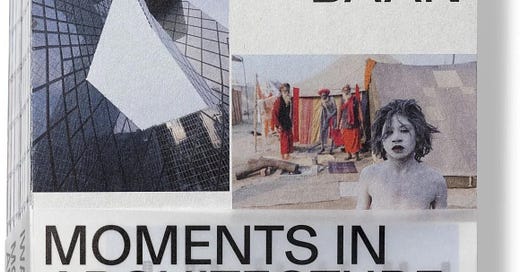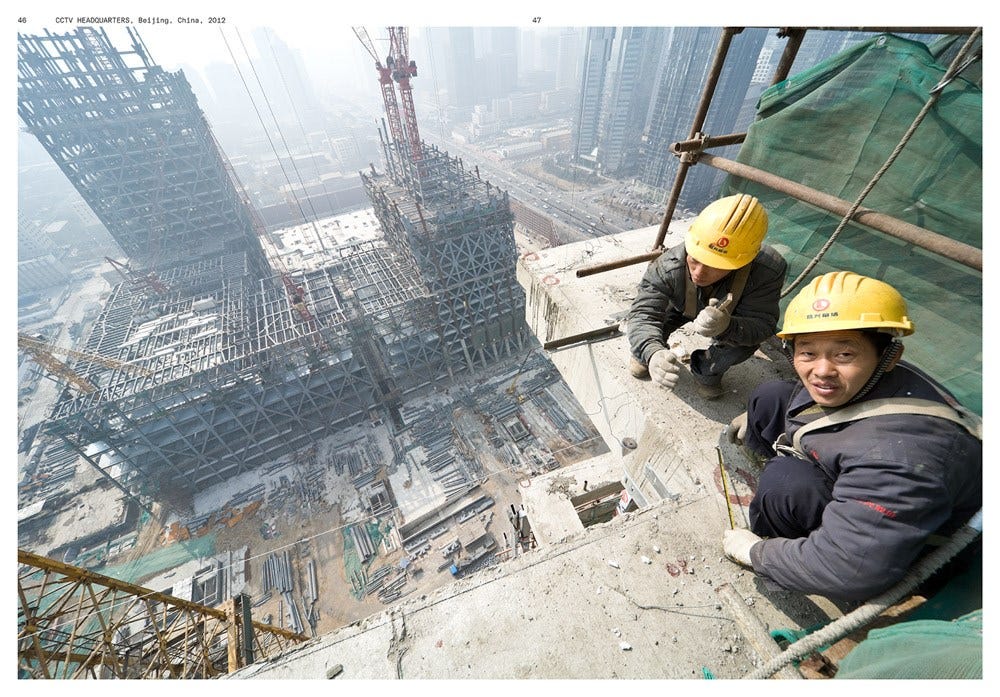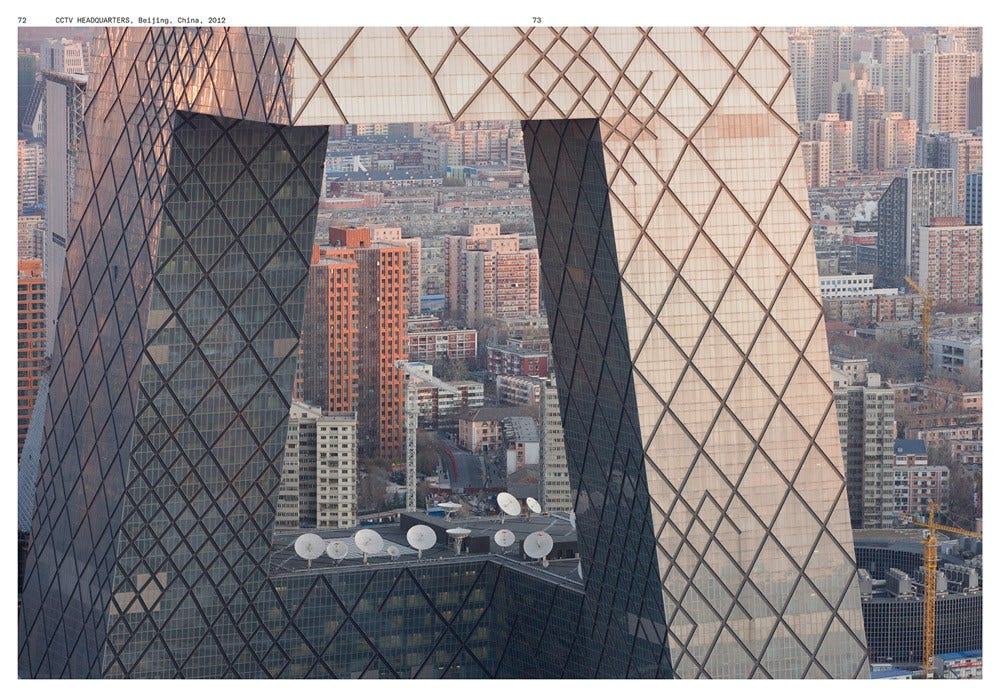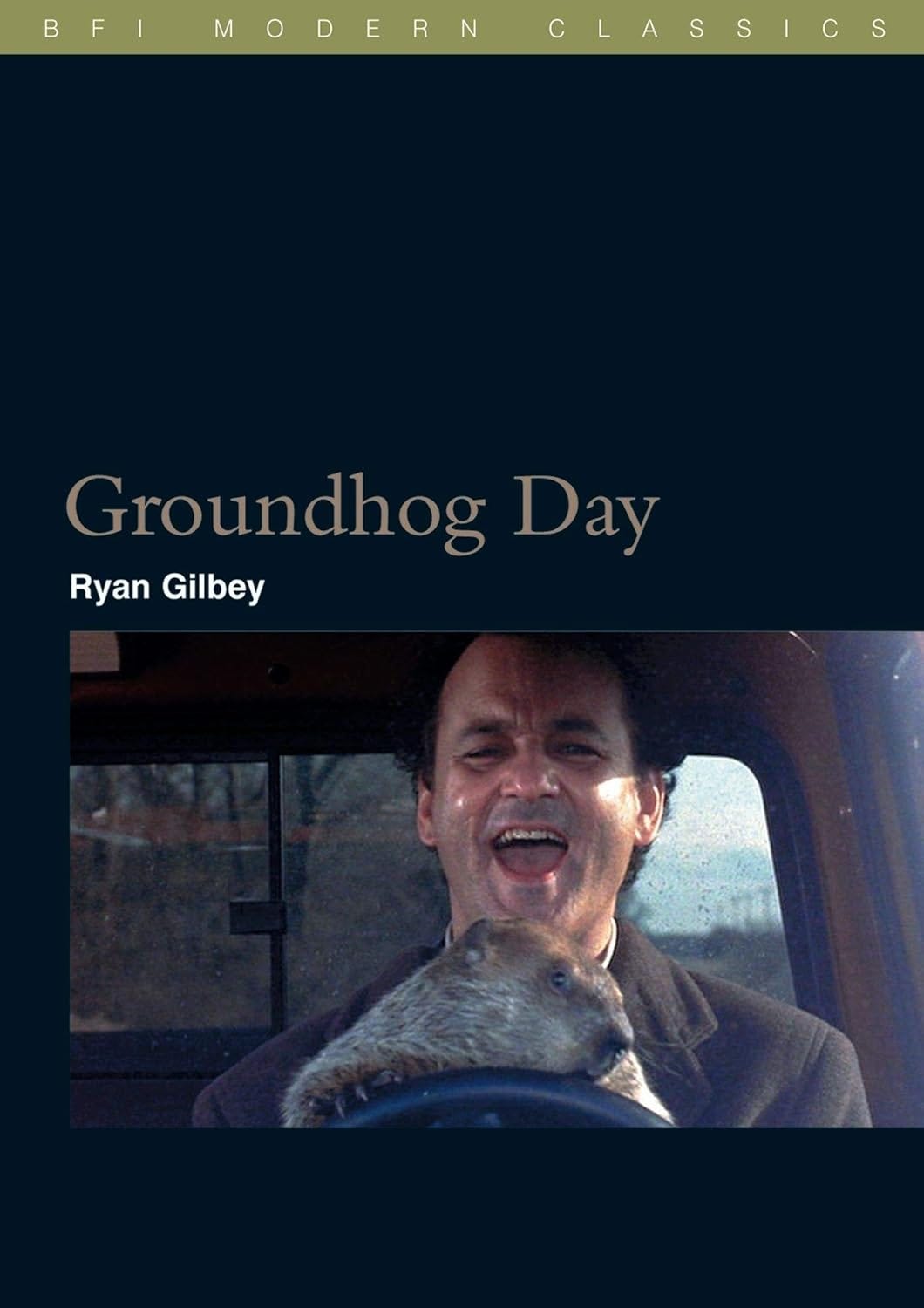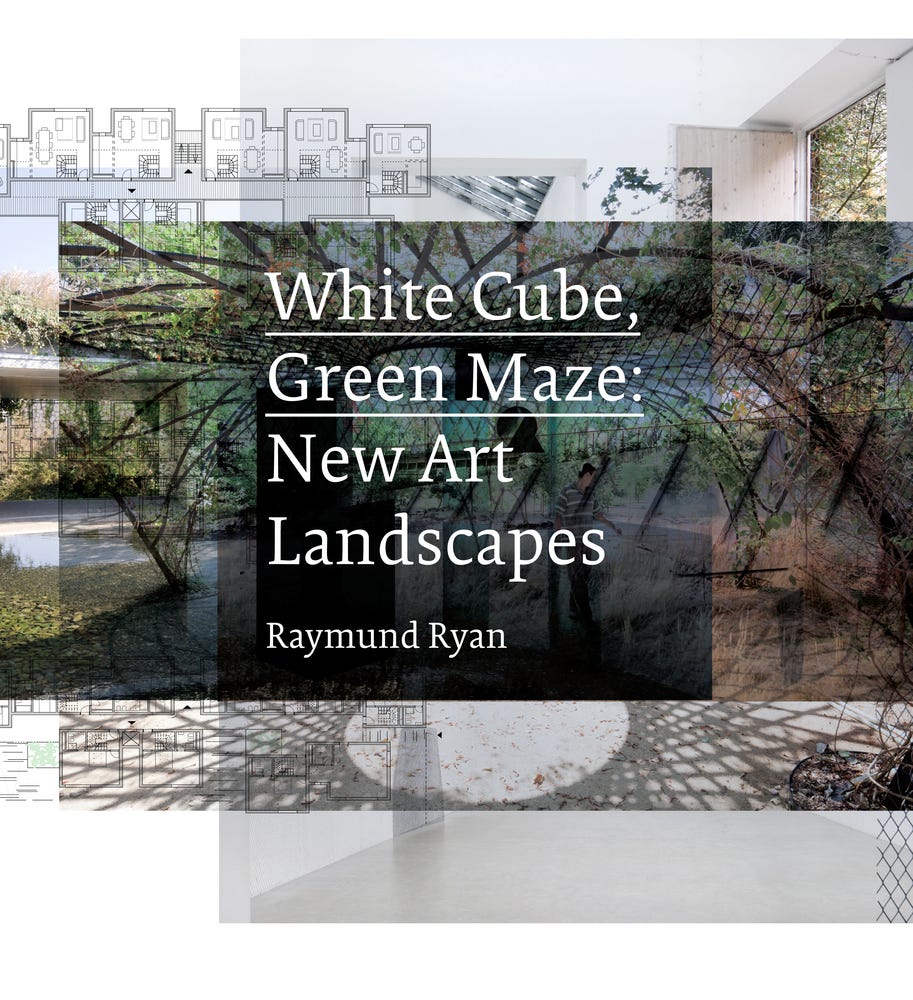This week’s newsletter starts and ends with books related to Iwan Baan, the superstar photographer who is the subject of a retrospective exhibition at the Vitra Design Museum in Weil am Rhein, Germany. In between are new releases and headlines, and Friday is Groundhog Day…again.
Book of the Week:
Iwan Baan: Moments in Architecture, Works 2005–Now edited by Mea Hoffmann and Mateo Kries, published by Vitra Design Museum (Amazon / Bookshop)
Back in May 2020, in conjunction with the second Architecture & the Media conference that took place online due to Covid, I was fortunate to interview Iwan Baan via Zoom. He talked with me about his preference for longer-term projects over individual commissions from architects, his working process, his appreciation of vernacular architecture, and other things related to his influential photography and the keynote talk he gave at the close of the conference. Given the lockdown context, the peripatetic photographer also touched on how he was busying himself at his home in Amsterdam by going through his roughly two-decade archive. Now, nearly four years later, I can’t help think that Baan’s time spent with his archive led to Iwan Baan: Moments in Architecture, the retrospective exhibition that opened at Vitra Design Museum last October and is on display there until March. That navel-gazing, if you will, likely allowed Baan to discover further nuanced strands within his work and determine, when the time came, which photographs to supply to curator Mea Hoffmann for the exhibition — reportedly 14,000 photographs were under consideration, so her task was far from easy.
Both exhibition and book are organized with a four-part thematic structure. While I have not seen the exhibition (it will travel after its run at Vitra, making that a greater possibility than at present), the book’s four sections are bookended by the aerials that Baan is known for, including The City and the Storm, the famous New York magazine cover photograph of a partially darkened Manhattan that Baan took from a helicopter right after Hurricane Sandy. The first section is “China,” devoted primarily to Baan’s extensive documentation of OMA’s CCTV Headquarters (2005–2012; shown here in spreads) and Herzog & de Meuron’s National Stadium for the 2008 Beijing Olympics. Each section starts with a short essay by Baan, a photographer of few words, and in this section he recounts the serendipity of meeting Rem Koolhaas in 22004, when Baan wasn’t sure what direction his career was going. The rest, the saying goes, is history, but Baan admits that “these two photo projects were highly formative,” hence them comprising one of the exhibition/book’s four sections.
The second section is devoted to some of the many “Commissions” Baan is also known for. Although Baan prefers longer-term projects over these commissions, and he works by exploring each place and documenting each building as an integral part of its context, eschewing directions from architects to shoot buildings from particular angles, he still manages to capture signature images for high-profile buildings, images that are widely circulated online and in print. The third section, “Cities,” presents some of the metropolises he has documented extensively for such books as African Modernism, Brasilia/Chandigarh, and Two Sides of the Border. The last section, “Continuities,” with its focus on vernacular architecture, can be seen as the antithesis of the first two chapters. If the first chapter depicts Baan “constructing” his career as a singular yet influential photographer of architecture (he doesn’t call himself an architectural photographer), the ordering of the book moves from capital-A architecture to buildings and landscapes in cities and rural areas where design is found outside of the profession. Uniting the whole are Baan’s formal approach to photography and his now familiar focus on the people who live, work, and play in the places he shoots — architecture as a backdrop to life.
Books Released This Week:
(In the United States, a curated list)
Brooklyn Bridge Park: Michael Van Valkenburgh Associates edited by Michael Van Valenburgh, published by The Monacelli Press (Amazon / Bookshop) — Just over two years after Brooklyn Bridge Park was officially completed, with the December 2021 dedication of Emily Roebling Plaza under the Brooklyn Bridge, a book chronicling the immensely popular 85-acre park is hitting shelves. It’s not the first book on BBP — two were released in 2016 — but it’s the first by the designer behind it, Michael Van Valkenburgh.
Fifth Avenue : History of America's Street of Dreams by Mosette Broderick, published by Unicorn Publishing Group (Amazon / Bookshop) — Fifth Avenue was laid out in the 1811 Commissioners’ Plan and then celebrated the opening of its first section in 1824. This is the first of what I assume will be numerous books published on the 200th anniversary of the storied Manhattan thoroughfare.
In Italy: Sketches & Drawings by Laurie Olin, published by ORO Editions (Amazon / Bookshop) — Landscape architect Laurie Olin, designer of Bryant Park, Columbus Circle, and many other notable public spaces, has rounded up a selection of his lovely watercolors and pen-and-ink drawings of Italian cities and landscapes. Che bello!
Rising Oceans & Spaces That Care: Complexities and Ideas behind the Friendship Hospital by Kashef Chowdhury / URBANA in Bangladesh by Niklaus Graber, published by Quart Architektur (Amazon) — Two years ago the Friendship Hospital in Bangladesh designed by Kashef Chowdhury/URBANA won the RIBA International Prize. This book documents the project and discusses the social and environmental challenges it confronts.
Full disclosure: As an Amazon Associate, AbeBooks Affiliate, and Bookshop.org Affiliate, I earn commissions from qualifying purchases made via any relevant links above and below.
Book News:
RIBA looks at what architects can learn from Sumita Singha’s new book, Thrive: A Field Guide For Women In Architecture. (The book is published by RIBA, it should be noted.)
Lots of coverage of Building Stories, the new long-term exhibition devoted to children’s books at the National Building Museum in Washington, DC: Bloomberg, Fast Company, Publishers Weekly, Washington Post, and yours truly at World-Architects.
The brutalism craze pulsing through the publishing world has reached Wales with the forthcoming publication of Brutal Wales / Cymru Friwtalaidd, which features the photography of Simon Phipps (of Finding Brutalism) and is presented at Wallpaper*.
From the Archives:
Friday is Groundhog Day so it’s time to revisit — yet again, tee-hee — the slim volume by Ryan Gilbey in the BFI Modern Classics series devoted to Groundhog Day, the 1993 film starring Bill Murray, written by Danny Rubin, and directed by Harold Ramis. I reviewed Gilbey’s book in 2004 and appropriately posted something about the film to my old blog nearly every February 2 after that, usually just as a reminder to watch the film but occasionally posting clips from it (most have been taken down from YouTube in the intervening years) and once even noticing how footage from the film ended up in an episode of The Good Wife. Happy Groundhog Day!
Apropos of this week’s “Book of the Week,” one of the first books I reviewed on my blog that extensively, if not exclusively, featured the photography of Iwan Baan, way back in 2012, was White Cube, Green Maze: New Art Landscapes, the catalog to an exhibition of the same name curated by Raymund Ryan at the Heinz Architectural Center at the Carnegie Museum of Art. The name says it all: a survey of six art museums sitting in carefully designed landscapes, from North America to Asia, from the Olympic Sculpture Park in Seattle to Benesse Art Site in Japan. The book touches on themes of abandoned industrial landscapes, art tourism, and the desire to break outside of the white cube, among other things, and uniting the whole are Baan’s photographs, many of them full-bleed on the large (10x11”) pages. All these years later, I’ll admit Baan’s photos don’t pack the punch of later projects (e.g., African Modernism and Torre David), but his documentary, full-of-people approach helps describe how these half-dozen “new art landscapes” are used by visitors.
Thank you for subscribing to A Weekly Dose of Architecture Books. If you have any comments or questions, or if you have your own book that you want to see in this newsletter, please respond to this email, or comment below if you’re reading this online. All content is freely available, but paid subscriptions that enable this newsletter to continue are welcome — thank you!
— John Hill

